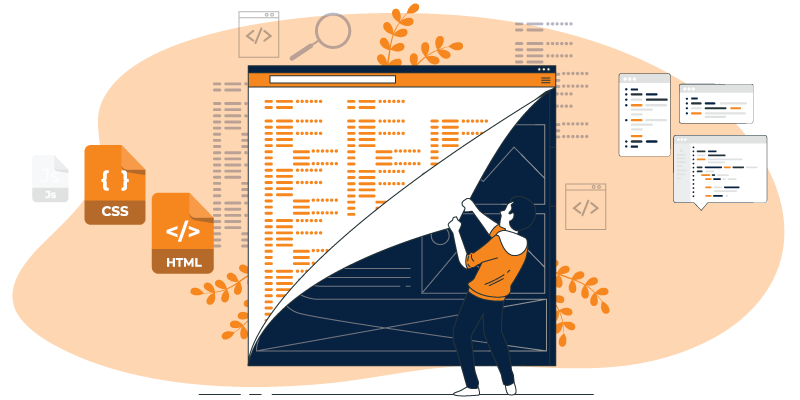Legacy code can be a source of frustration and headaches for developers, more often than not, causing them to pull their hair out in frustration. It’s like trying to fix a car that’s been patched up with duct tape and glue — you know it’s not ideal, but it’s what you have to work with. Tackling legacy code is quite a conundrum in software development, but it’s one that can’t be ignored if businesses want to remain competitive in today’s fast-paced digital landscape. In this article, we’ll provide insight into the legacy code and offer some tips on how to tackle and turn it into a well-oiled machine that’s ready to take on the future.
What Is Legacy Code?
Legacy code is a term used to describe any software system or application that is outdated, difficult to maintain, and has a significant amount of code debt. It is code that was written years ago, often using older programming languages, techniques, and tools that are no longer in frequent use.
As such, legacy code can pose significant challenges for developers, project managers, and business stakeholders. With the continual evolution of technology, legacy code may become increasingly obsolete and incompatible with newer systems and platforms.
Despite the difficulties, legacy code is often critical to the operation of many businesses and organizations, and it is not always feasible or cost-effective to replace it entirely. As a result, it is essential to develop strategies for managing and maintaining legacy code effectively.

How to Deal With Legacy Code?
One of the most critical steps in managing legacy code is understanding its current state and identifying areas for improvement. This often involves conducting a thorough code review to identify any code debt, performance issues, or security vulnerabilities.
Once these issues have been identified, it is essential to prioritize them based on their severity and impact on the system’s overall functionality. This prioritization can help developers focus their efforts on addressing the most critical concerns first, thereby reducing the risk of downtime or other system failures.
Documentation
In addition to addressing code debt, it is essential to document the legacy code thoroughly. The documentation should include detailed information about the system’s architecture, functionality, and dependencies, as well as any known issues and workarounds.
By documenting the code, developers can have an easier time understanding how the system works and make modifications without introducing new errors or breaking the existing functionality. It can also help new team members get up to speed quickly and start contributing to the project.
Test-Driven Development Approach
Another vital aspect of managing legacy code is to adopt a test-driven development (TDD) approach. TDD involves writing automated tests for each piece of code and running those tests regularly to ensure that the system functions as expected.
By using TDD, developers can modify the code without fear of introducing new bugs or breaking existing functionality. Such an approach can significantly reduce the time and effort required to maintain and modify legacy code.
Updating the System
Finally, it is essential to continue investing in the system and updating it accordingly. This may involve rewriting sections of the code, upgrading to newer programming languages or frameworks, or migrating the system to a new platform.
While these updates may be costly and time-consuming, they can ultimately save money in the long run by reducing the risk of downtime or system failures, improving performance, and enabling the organization to take advantage of new technology and business opportunities.
What Are Modernizers?
Modernizers, in the context of software development, are tools or techniques that help update legacy systems and applications to modern standards. Moreover, modernizers aim to make legacy code more efficient, maintainable, and scalable by adopting new programming languages, libraries, and frameworks.
Modernizing legacy code is crucial for businesses that rely on these systems to stay competitive and maintain their edge in the market. In fact, modernizers can help companies reduce code debt, improve system performance, and enable the adoption of new technology and business opportunities.
There are several types of modernizers available, including the following:
- Code analysis tools — analyze code and provide insights into potential issues, such as security vulnerabilities, performance bottlenecks, and technical debt.
- Code refactoring tools — help developers identify and eliminate redundant or unnecessary code, making it easier to maintain and modify.
- Migration tools — enable organizations to migrate their legacy systems and applications to modern platforms, such as cloud-based infrastructure or new operating systems.
- Containerization tools — package legacy applications and services into containers, making it easier to deploy, manage, and scale.
- Automation tools — automate common tasks, such as testing, building, and deploying, making maintaining and updating legacy systems easier and faster.
Lastly, modernizers can benefit companies of all sizes and industries, from startups to large enterprises. By using modernizers, businesses can remain agile and adaptable, as well as maintain their competitive edge.
Legacy Code: Summed Up
In conclusion, legacy code is a common challenge for many businesses and companies, but it is not insurmountable. By adopting a strategic approach to managing and maintaining legacy code, developers and project managers can reduce the risk of downtime and system failures, improve system performance, and enable businesses to take advantage of new opportunities.